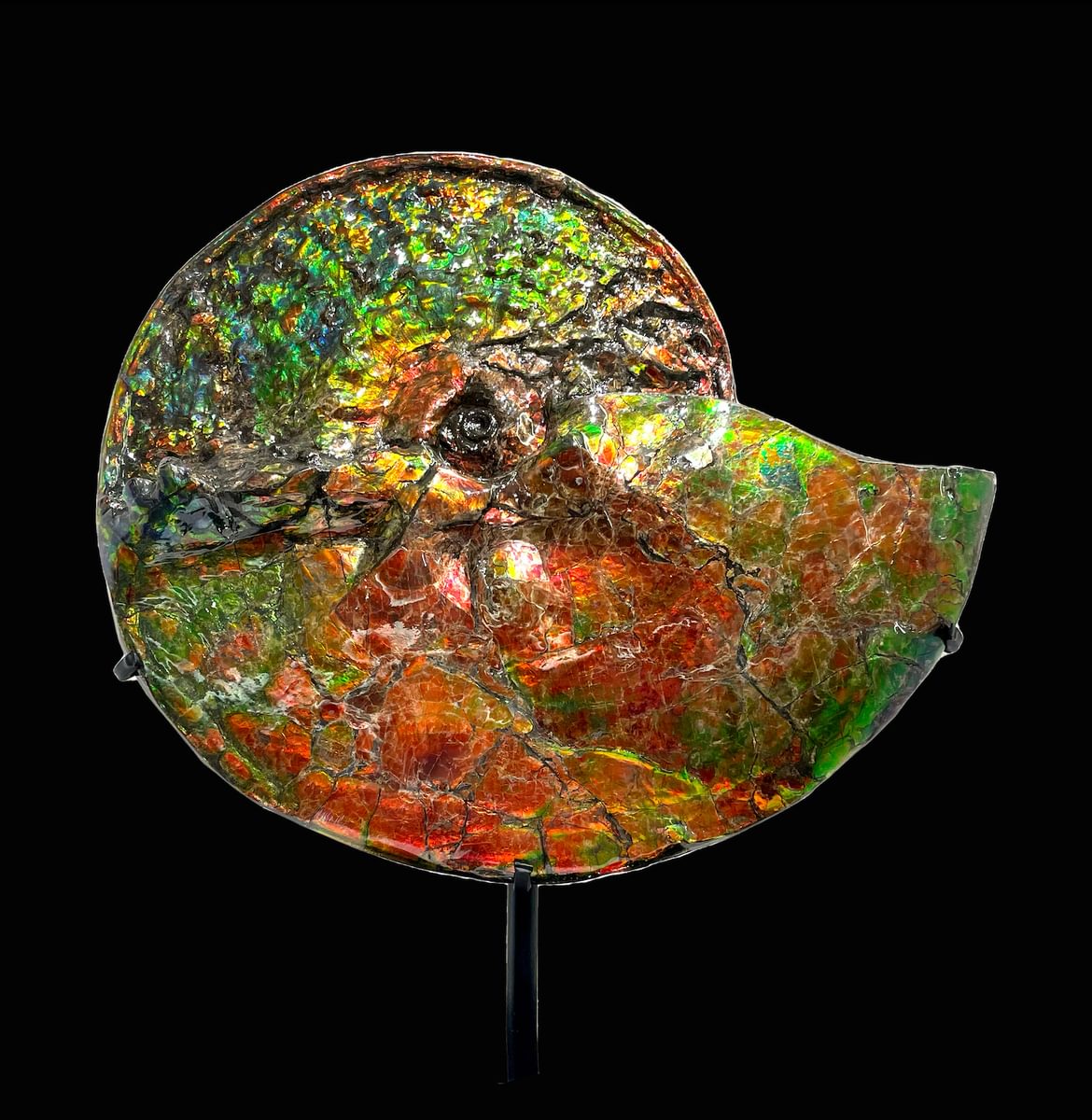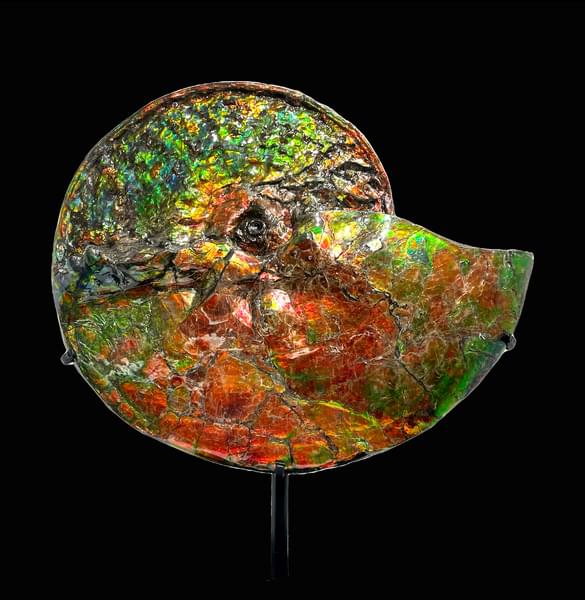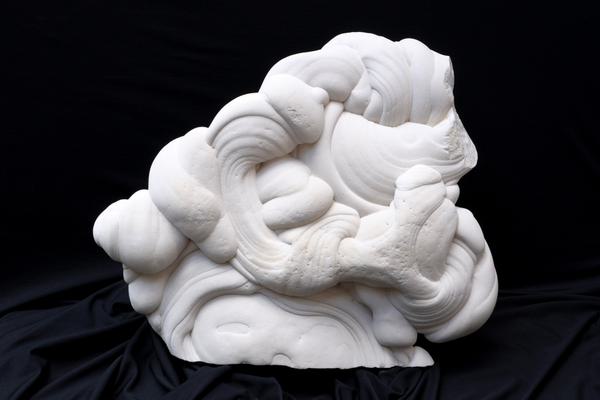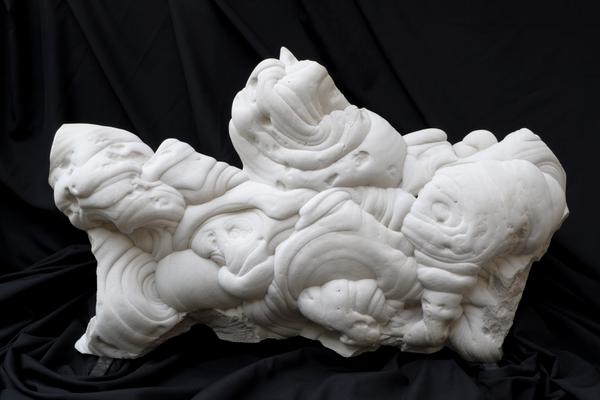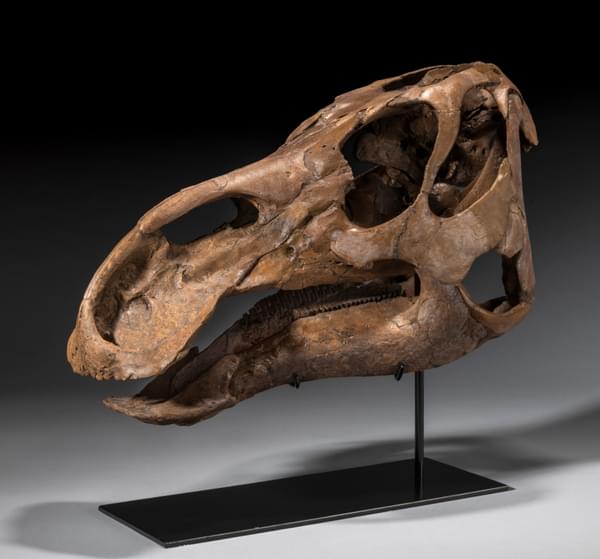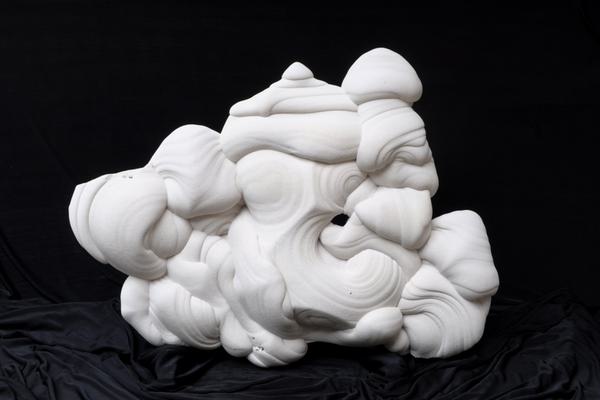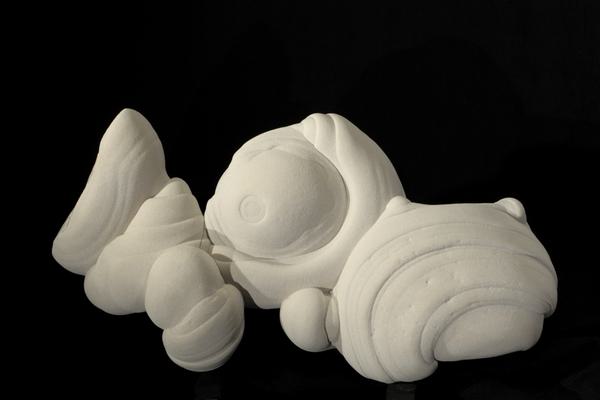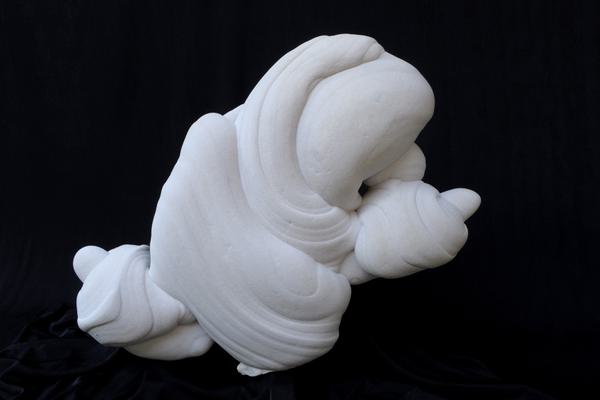Iridescent Ammonite (ammolite)
Placenticeras (aka "flat horn") was a fast-swimming, carnivorous cephalopod—the taxonomic class that includes today's octopus, nautilus, and squid. Much like a submarine, these ammonites employed gas and fluid-filled chambers to regulate their position in the water column. The animals themselves lived only in the outermost compartment, employing their tubular siphuncle to connect its chambers along their shell's ventral surface.
While dinosaurs ruled the land during the Late Cretaceous, the ammonite Placenticeras (aka "flat horn") could be found flourishing in oceans worldwide. However, the vast majority of this species took up residence in the Western Interior Seaway, an ocean that cut North America in half from the Arctic Circle to what is now the Gulf of Mexico. In ideal preservation circumstances, a recently-deceased ammonite would sink to the bottom of this sea and become covered in sediment. Over time, its muddy tomb would eventually be converted to shale, and it is these ancient shale deposits of the Canadian Rockies that yield the world's most significant—and only gem-quality—ammolite deposits.
Along with amber and pearl, ammolite is one of the world's few biogenic substances. Resembling the inorganic opal, it is found exclusively in the shells of ammonites that have undergone the fossilization process known as permineralization.
The quality of gem ammolite is determined by a number of factors, with the first being its number of colours. Also of great significance is the range of the ammolite's chromatic shift, graded by the way its colours change in hue and intensity as they diffract light when viewed from different angles. Lastly, an ammolite's magnitude of iridescence also impacts its quality and worth, with the finest specimens displaying large and uninterrupted swaths of lustrous, rainbow-like colours.
Iridescent Ammonite (ammolite)
- Type of Object
- Iridescent Ammonite (ammolite)
- Place of Origin
- Alberta, Canada
- Date
- Late Cretaceous period, 72 million years old
- Size
- 16 ¼ x 5 ½ x 1 ¼ in : 41 x 14 x 3 cm
- Reference
- AC22-57
- Status
- Available
Available Artists
- Albers Anni
- Ancart Harold
- Andre Carl
- Avery Milton
- Baldessari John
- Barnes Ernie
- Calder Alexander
- Castellani Enrico
- Clough Prunella
- Crawford Brett
- Dadamaino
- de Tollenaere Saskia
- Dyson Julian
- Elsner Slawomir
- Freud Lucian
- Gadsby Eric
- Gander Ryan
- Guston Philip
- Haring Keith
- Hartung Hans
- Hayes David
- Held Al
- Hepworth Barbara
- Hill Anthony
- Hitchens Ivon
- Hockney David
- Hutchinson Norman Douglas
- Jenney Neil
- Katz Alex
- Kentridge William
- Knifer Julije
- Kusama Yayoi
- Le Parc Julio
- Leciejewski Edgar
- Léger Fernand
- Levine Chris
- Marchéllo
- Martin Kenneth
- Mavignier Almir da Silva
- Miller Harland
- Mitchell Joan
- Modé João
- Moore Henry
- Morellet François
- Nadelman Elie
- Nara Yoshitomo
- Nesbitt Lowell Blair
- Nicholson Ben
- O'Donoghue Hughie
- Pasmore Victor
- Perry Grayson
- Picasso Pablo
- Pickstone Sarah
- Prehistoric Objects
- Riley Bridget
- Ruscha Ed
- Sedgley Peter
- Serra Richard
- Shrigley David
- Smith Anj
- Smith Richard
- Soto Jesús Rafael
- Soulages Pierre
- Spencer Stanley
- Taller Popular de Serigrafía
- The Connor Brothers
- Vasarely Victor
- Vaughan Keith
- Whiteread Rachel
- Wood Jonas
